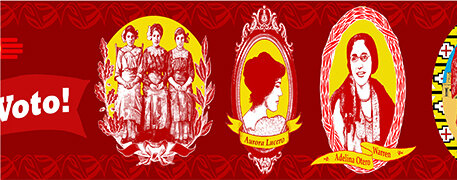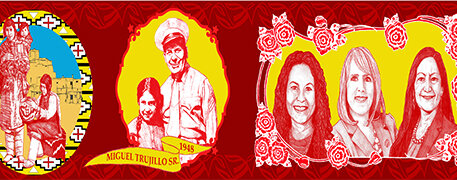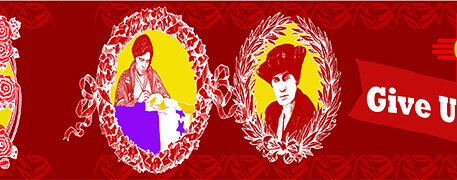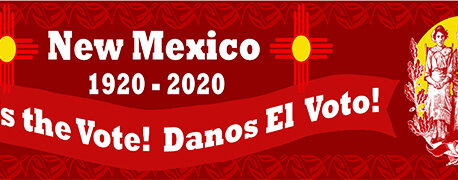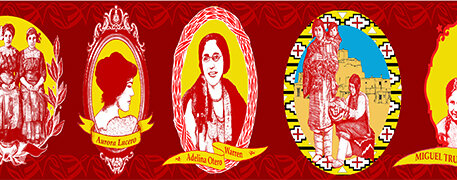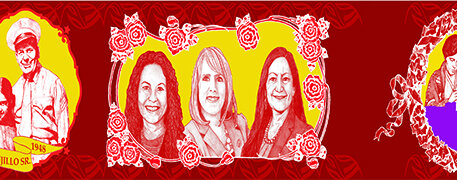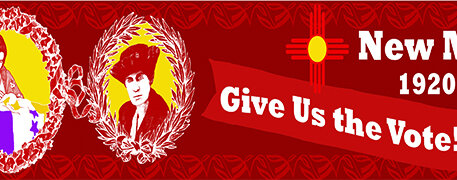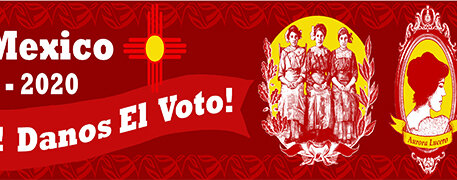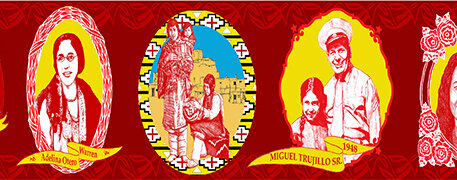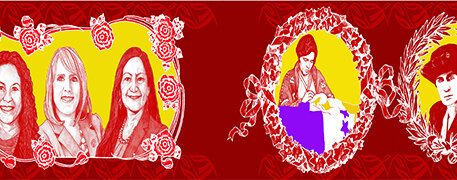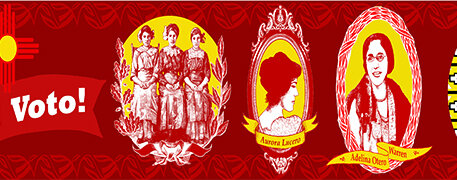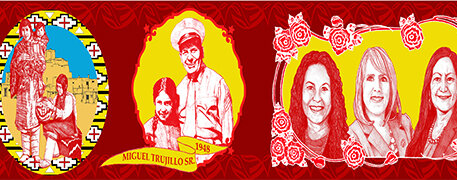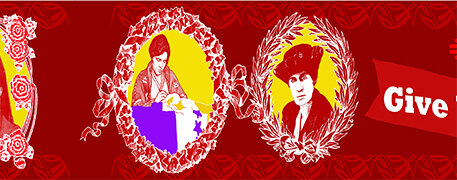32nd State to Ratify | New Mexico | Laurel Garcia Colvin, Artist
Her Flag Artist, Laurel Garcia Colvin
New Mexico’s stripe depicts women instrumental to the ratification of the 19th amendment and the man responsible years later for Native American women and men gaining the right to vote.
A Laguna Pueblo pottery pattern resembling blades of corn is on the top and bottom of the strip, along with the red Zia Pueblo sacred sun symbol found on the yellow state flag of New Mexico with the phrase “Give Us the Vote!” in English and Spanish.
Alice Paul, shown in the first toile frame, founded the Congressional Union, which played a vital role in the suffrage movement in New Mexico. Ms. Paul sent Ella St. Clair Thompson, in the second toile frame, to New Mexico in 1915 to organize and rally women and men to the cause. Thompson recognized the need for Hispanic women and men to support suffrage, and pushed for bilingual flyers and speeches at public rallies. The three Hispanic women in the third toile frame represent Thompson’s target audience. She recruited two women from influential Hispanic political families to speak in Spanish at the first public meetings.
Aurora Lucero, daughter of New Mexico’s first secretary of state and editor of the Spanish weekly newspaper, in the fourth toile frame, spoke at the first rally on October 15, 1915.
Adelina Otero-Warren, in the fifth toile frame, played a very active role in the suffrage movement and was asked by Alice Paul to become the president of the New Mexico Congressional Union in September 1917. Ms. Otero-Warren was able to reach both Hispanic and Anglo women to support the lobbying efforts directed at New Mexico’s congressional delegation.
New Mexico women won full suffrage with the final ratification by the state legislature on the amendment in 1920. However one group in New Mexico did not gain the right to vote – Native American women and men as represented by the portraits of Carlotta Chiwiwi and Juana Marie from the Isleta Pueblo in a Navaho pattern frame.
Miguel Trujillo Sr., portrayed with his daughter, in the seventh toile frame, was a member of the Isleta Pueblo, a Marine sergeant in WWII and an educator when he tried to register to vote in June 1948. Though Native Americans were granted citizenship by the federal government in 1924, the New Mexico Constitution barred Native Americans from voting. Trujillo filed a lawsuit and won his case on August 3, 1948, thus securing Native Americans in New Mexico the right to vote.
The last rose toile frame features three present day women politicians representing New Mexico: Xochitl Torres Small, U.S. House of Representatives of New Mexico 2nd Congressional District; Michelle Lujan Grisham, Governor of New Mexico, and Debra Anne Haaland, member of the Laguna Pueblo and U.S. House of Representatives of New Mexico 1st Congressional District. All three of these women reflect the history and legacy of the suffrage movement in New Mexico.

